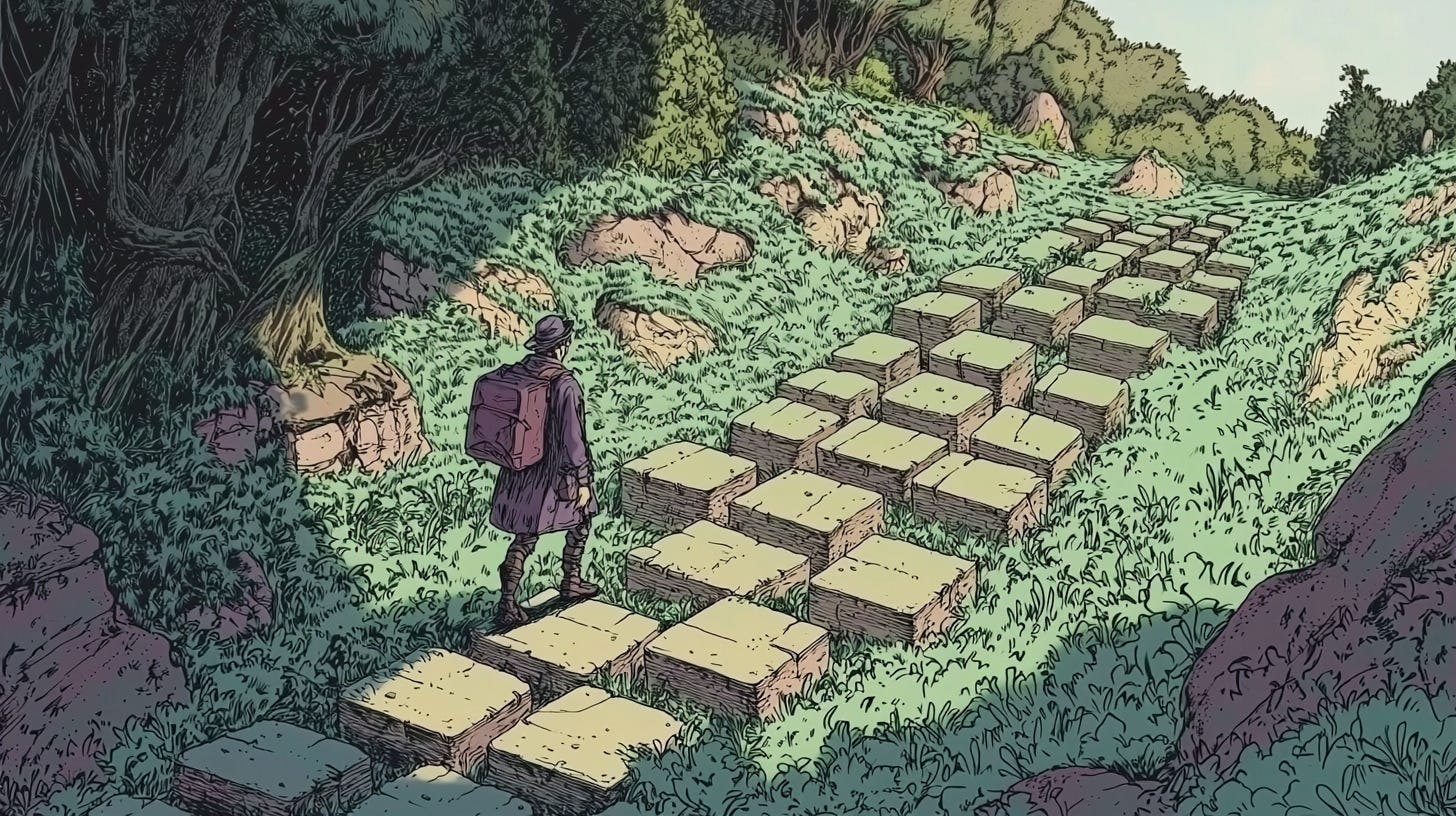Return to fundamentals
Returning to basics is not a step backwards.
I've been thinking about fundamentals lately. An Achilles injury I carried for almost two years, living in denial, led to surgery in November 2023 — all because I didn't have health insurance at the time it happened in 2021. When I finally got a new job and coverage, I waited too long to feel secure, completely ignoring the opportunity cost of living with a missing Achilles tendon. No long weekend flaneuring. No gym. The weeks turned to months as 30 lbs crept onto my body and bad habits accumulated.
Nearly a year after surgery, walking feels new again. I must consciously consider each step — heel to toe, right foot push off versus left. There is something profound about returning to the basics of anything: our craft, routines, beliefs, or behaviors. Every athlete or artist with a consistent practice inevitably must revisit the fundamentals, usually when life or our work has strayed off course.
It echoes the wisdom of legendary pianist Vladimir Horowitz: "If I skip practice for one day, I notice. If I skip for two days, my wife notices. Three days, the world notices."
So what are the fundamentals for a writer like myself? Tasting beautiful prose. Fiddling with words until they sing. Cultivating an ear for the music within sentences. Stretching and engaging the muscles that produce language. Observing the world with care and attention. Simple, yet arduous.
When we can't commit to the basics daily, it's a sign we're likely prioritizing something else that feels important but ultimately isn't. Distraction pulls us from what improves our craft, tempting us to seek hacks and shortcuts instead.
Publishing is a muscle, and this Substack was my attempt to re-engage it after years of atrophy. When I started blogging 15 years ago, naivety and innocence were on my side. I published like no one was reading, imbuing my writing with raw vulnerability and unfiltered truth-telling. Now, I find myself battling an internal dialogue:
"Write whatever you want!"
Vs.
"But what will people think? My boss, colleagues, or friends? Does anybody even read anymore? Does any of this matter?"
This chatter leads to blockage because those once strong publishing muscles have withered away, just like my post-injury hamstring.
Bloat is the enemy of basics. It's everywhere: the economy, politics, industries, media. Bloat is the natural progression when we lose sight of what truly matters. Print free money during COVID? Interest rates skyrocket. Over-hire at tech startups? Cue the layoffs. Succumb to clickbait for profits? Watch public trust in media sink to historic lows. Neglecting the fundamentals always has consequences.
My tattoo artist decided to learn sculpting to break free from the comfort of his tattooing routine. A few times a year, he apprentices under master sculptors in Italy, the epicenter of the world's marble. When I asked how this impacted his tattooing craft of 20+ years, he replied, "I had to throw everything away and be a student again. I relearned my fundamentals." The way he sculpts marble has completely influenced how he tattoos skin.
Artists who "throw everything away" aren't literally erasing their skills, but rather shedding the cruft that's accumulated over the years. Clearing out the fun but ultimately short-lived tips, tricks and shortcuts to uncover the timeless, evergreen habits and fundamentals. The hard stuff that takes real commitment.
For photographers who've only shot digitally, the resurgence of film has reignited those core artistic muscles: observing, anticipating the moment, slowing down, and framing with intention. Holding a film camera shifts how you see the world compared to a digital one. And with each shutter click costing a buck twenty-five, the stakes are real.
Picasso, despite his success, felt compelled to return to basics in the early 20th century. He began studying and incorporating African and Iberian art into his work, kickstarting his groundbreaking Cubist period. Stripping down to primitive forms and fundamental shapes revolutionized his art.
Miles Davis, after playing blazing bebop with Charlie Parker's quintet, stepped back in 1948 to explore a new jazz frontier. Teaming up with arranger Gil Evans, Davis assembled an unconventional nine-piece band that swapped bop's intense heat for a cooler, more composed sound with unique instrumental blends. Those sessions, later released as "Birth of the Cool", marked a crucial pivot point in jazz history and helped bridge bebop and cool jazz with a more emotionally restrained and harmonically intricate approach.
Even Georgia O'Keeffe, as her eyesight deteriorated in old age, returned to simpler forms and began sculpting, demonstrating a return to elemental shapes and textures.
If your life, work, or art feels bloated — if your mind buzzes incessantly, if you cram your quiet moments with endless podcasts with out-of-touch rich idiots who tell you how to live life, Twitter rants and Instagram Threads brain rot projectile word vomit — the solution is simple yet arduous:
Return to your fundamentals.
This is where sanity resides. This is the springboard for real progress and mastery. This is where the greats have toiled away entire lifetimes. And in devotion to their craft, they found the path to beautiful, fulfilling lives. Not because they’re more talented or lucky than us, but because they were able to stay sane. To stay focused on what matters.
You are not going backward by revisiting the fundamentals of your craft or areas of your life. You are returning again to the place that got you started. That began a journey. And by returning home, you can embark on a new one.




Absolutely vital read
Love